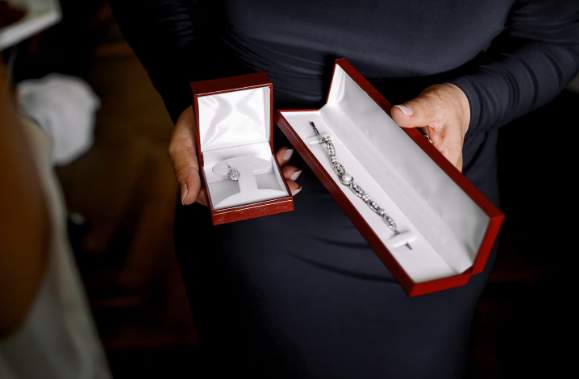
Opening a permanent jewelry business combines creativity, craftsmanship, and the excitement of offering clients pieces they’ll treasure forever. Each custom bracelet or necklace represents not just artistry, but also an investment in materials, tools, and your reputation. However, even the most careful business owners face unexpected challenges—damage, theft, or accidents can happen at any time.
Permanent jewelry business insurance acts as a safety net, protecting your inventory, equipment, and studio while covering liability if someone is injured or an event goes wrong. With the right coverage, you can focus on designing and creating, knowing that your business has a strong layer of protection. Investing in this insurance ensures financial security, uninterrupted operations, and peace of mind, letting your jewelry business shine brightly while staying prepared for any unexpected setbacks.
The permanent jewelry business comes with a unique set of challenges and risks. From theft and burglary to accidental damage or loss of valuable inventory, unforeseen events can occur at any moment. Adding to the complexity, operating specialized equipment such as pulse-arc welders alongside pressurized tanks of gases increases the potential for accidents.
When these mishaps happen, the financial consequences can be significant. Permanent jewelry business insurance acts as a safety net, protecting your investment, tools, and studio from unexpected losses. While it cannot prevent every accident, it ensures that a single incident doesn’t derail your business or threaten its future. With proper coverage, jewelers can focus on creativity and client satisfaction, confident that their operations are safeguarded against both common and extraordinary risks.
Starting a permanent jewelry business comes with creativity, excitement, and the responsibility of protecting your investment. From tools and inventory to employees and clients, there are many risks to consider. Choosing the right insurance ensures that your business remains secure and resilient, even when unexpected events occur. While coverage needs vary depending on the size and scope of your operations, most permanent jewelry artists start with a solid foundation of essential policies. Here’s a detailed look at the five most important types of insurance for your jewelry business.
Accidents happen, no matter how careful you are. Imagine a customer slipping in your studio or accidentally damaging a piece of jewelry while trying it on. These incidents can result in costly medical bills or property damage claims. General liability insurance protects your business from such situations. It covers legal expenses, settlements, and claims arising from bodily injury or property damage. This insurance ensures your business can continue operating smoothly, even if the unexpected occurs. Many jewelers consider general liability coverage the minimum essential policy, providing peace of mind while working with clients.
Also called Errors & Omissions Insurance, professional liability coverage safeguards your business against claims related to mistakes or oversights during your work. In the permanent jewelry business, errors could include improperly welded jewelry or a customer experiencing an allergic reaction due to a mistake in materials. This coverage helps offset legal fees, settlements, or other expenses if a client holds your business responsible. Investing in professional liability insurance protects both your reputation and your finances, making it a smart choice for any permanent jewelry studio.
Jewelers block insurance is specifically designed for jewelry businesses. It covers your inventory, tools, and valuable items that may be left on consignment or for repair. Unlike standard property insurance, jewelers block insurance addresses the unique risks associated with handling high-value materials like gold, silver, and gemstones. Whether your studio suffers theft, damage, or loss during transit, this specialized coverage ensures your most valuable assets are protected. For permanent jewelry businesses, jewelers block insurance is an essential layer of protection that standard policies often do not provide.
Your team is the backbone of your jewellery business. If an employee gets injured on the job—while soldering, polishing, or handling equipment—workers’ compensation insurance provides medical coverage and wage replacement. It not only protects employees but also shields your business from potential lawsuits related to workplace injuries. Offering workers’ compensation demonstrates a commitment to employee safety and fosters a secure work environment. Even if you have a small team or plan to hire staff in the future, this coverage is vital for long-term business stability.
For any permanent jewelry business with a physical studio, protecting the property itself is crucial. Commercial property insurance covers your building, inventory, tools, and other equipment in case of fire, natural disasters, or vandalism. Without this coverage, unexpected damage could lead to significant financial loss, halting operations and threatening your livelihood. Commercial property insurance acts as a safety net, helping you recover quickly and resume business operations without major disruptions.
Selecting the right insurance for your permanent jewelry business is a crucial decision that requires careful planning. This isn’t a matter of picking the first policy you come across; it’s about finding coverage that truly safeguards your craft, assets, and livelihood.
Start by evaluating the cost. Insurance is an essential investment, but it should fit within your budget. Compare quotes from multiple providers to find a policy that protects your studio, inventory, and welding operations without straining your finances.
Next, examine the coverage details closely. A strong policy addresses the unique risks of your business, including theft, accidental damage, and liability claims. Comprehensive coverage ensures that every aspect of your operation—from tools to client interactions—is protected, giving you confidence in your day-to-day work.

Deductibles also play a key role. Lower deductibles often come with higher premiums, while higher deductibles reduce costs but increase out-of-pocket expenses when claims arise. Choose a balance that aligns with your financial strategy.
Finally, consider the insurer’s reputation. A reliable insurance company with excellent customer feedback and responsive claims support can make a significant difference when you need assistance. The right provider will stand by your business, helping you navigate challenges efficiently and effectively.
A smooth claims process starts long before an incident occurs. Organized record-keeping helps speed up claims approval and prevents disputes.

Maintaining a current inventory with photos, purchase receipts, and serial numbers is critical. In case of loss, insurers will require proof of ownership and value. Include the following details:
A thorough inventory reduces delays during claims, provides evidence for coverage, and can help in recovering stolen or damaged items.
Permanent jewelry often involves intricate techniques. Documenting each service, client interaction, and special request helps establish professional diligence. Service logs can:
Emails, receipts, contracts, and verbal agreements with clients or vendors matter during claims assessment. Insurers often verify information through documentation. Keeping digital backups ensures records remain accessible at all times.
Once an incident occurs, the next step is filing a claim promptly. Acting quickly not only meets policy requirements but also increases the chances of full recovery.
Report any damage, loss, or liability incident as soon as possible. Delays may result in partial or denied coverage. Include concise, factual details about the incident.
Attach photographs, receipts, and service records. For theft or vandalism, file a police report immediately. Evidence submission prevents back-and-forth delays and helps insurers evaluate claims accurately.
Insurance policies often outline specific steps for filing claims. Following the prescribed process ensures claims progress without unnecessary obstacles. Avoid omitting information or submitting incomplete forms.
Stay in contact with your insurer throughout the process. Respond promptly to requests for additional details. Clear communication reduces processing time and avoids misunderstandings.
Understanding typical scenarios helps jewelers anticipate potential challenges.
Jewelry studios are high-value targets. Even with security measures, theft can happen. A well-structured permanent jewelry business insurance policy covers stolen inventory, tools, and sometimes cash on-site.
Accidents like electrical malfunctions, soldering fires, or burst pipes can destroy expensive materials. Policies covering property damage allow business owners to replace inventory and repair facilities without draining savings.
Clients may experience allergic reactions, skin irritation, or minor injuries during services. Liability coverage protects your business from lawsuits, covering medical expenses or legal fees.
Jewelers attending craft fairs, trade shows, or private events face unique risks. Accidents at external locations can involve third parties or damage rental spaces. Event coverage ensures protection during off-site engagements.
Invest in a policy tailored to permanent jewelry businesses rather than generic business insurance. Tailored coverage ensures all potential risks, from client interactions to specialized tools, are included.
Read the policy carefully, paying attention to:
Knowing policy details reduces surprises during the claims process.
Educate employees on proper handling, safety protocols, and reporting procedures. Staff awareness minimizes accidents and ensures accurate documentation if an incident occurs.
Use digital systems for inventory, receipts, and client contracts. Digital records are easier to update, search, and submit during claims processing.
Open communication with insurers and clients prevents misunderstandings. Honest and timely reporting speeds up resolution and builds trust.
Understanding how insurers assess claims helps jewelers prepare effectively.
Review of Documentation: Insurers verify ownership, value, and legitimacy of the claim.
Damage Assessment: An adjuster may inspect physical damage, review photos, or consult experts.
Policy Verification: Coverage limits, exclusions, and deductibles are applied to determine payout.
Settlement Offer: Insurers provide payment based on verified losses.
Preparedness at each stage streamlines the process, reduces stress, and minimizes disputes.
Avoiding Common Claims Pitfalls
Certain mistakes prolong claims or reduce payouts. Avoid the following:
By proactively addressing these issues, jewelers maintain smooth operations even during unexpected events.
Benefits of Smooth Claims Management
Efficient claims management offers multiple advantages:
Smooth claims processes empower jewelers to focus on craftsmanship rather than operational risks.
The permanent jewelry industry combines creativity, precision, and customer trust. Yet, with unique risks such as theft, equipment damage, and welding-related hazards, no business is immune to setbacks. Insurance is more than a financial safety net—it’s the backbone that keeps your craft protected and your future secure. By choosing the right coverage, you shield your business from losses that could otherwise halt your growth. It allows you to focus on what you love most: designing meaningful jewelry that lasts a lifetime. Protection empowers you to build stronger relationships with clients and operate with confidence, knowing that risks won’t derail your progress. Every successful business starts with preparation, and insurance is one of the smartest investments you can make. Secure your coverage today so your permanent jewelry business can shine brighter tomorrow.